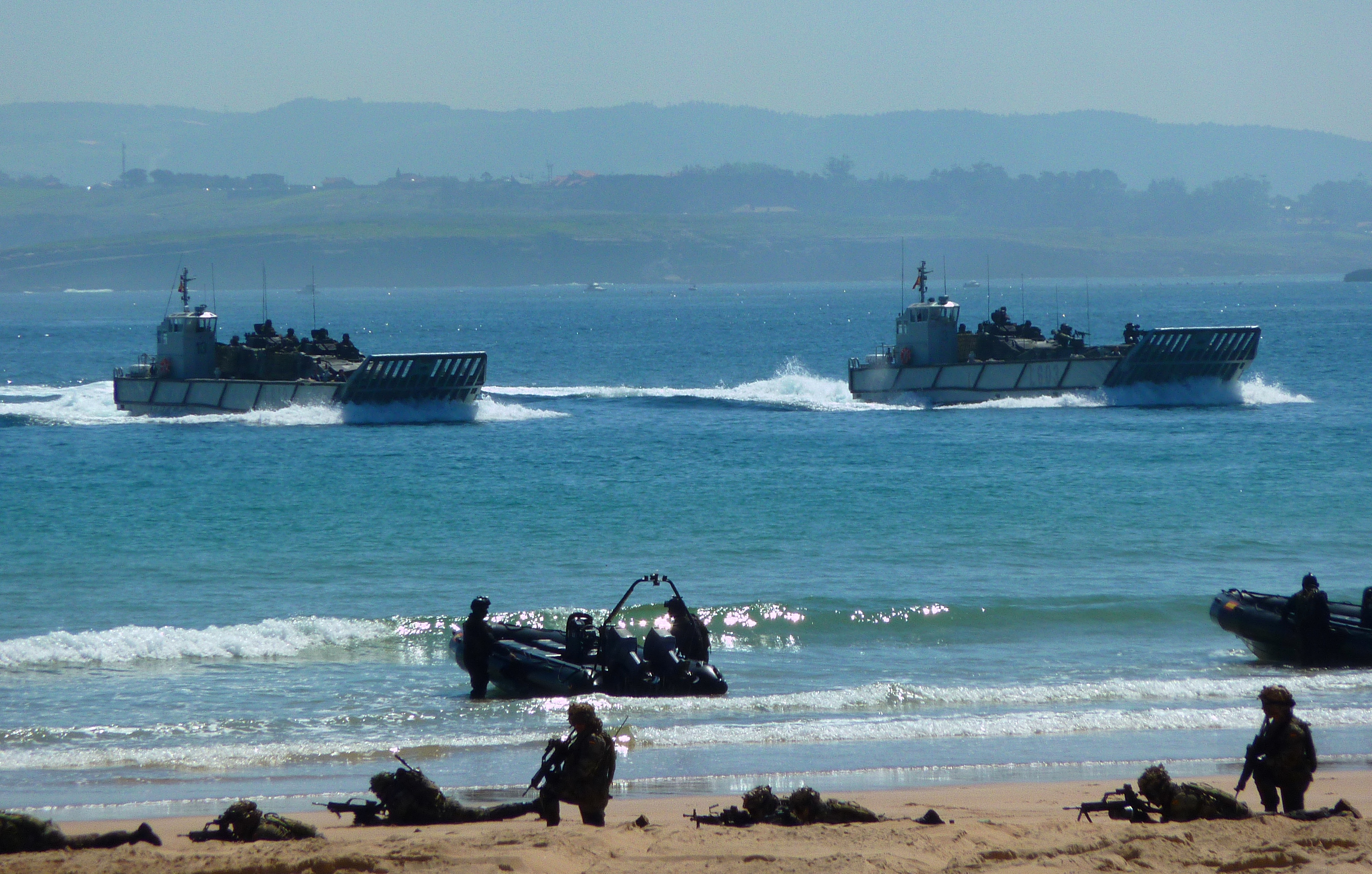LCM-1E on:
[Wikipedia]
[Google]
[Amazon]
The LCM-1E is a class of amphibious

 In 2009, the Australian Defence Force began plans to acquire landing craft for the under-construction ''Canberra''-class landing helicopter dock ships. Arrangements were made to acquire craft from Navantia (the builder responsible for the LHDs), and in September 2011, the purchase of 12 LCM-1E craft was approved by the Australian government. The landing craft were delivered in batches of four: the first batch in May 2014, followed by the second in February 2015, with the third due by mid-2015. In Australian service, the craft are referred to as LLCs (LHD Landing Craft), and six are assigned to each of the ''Canberra''-class ships: four embarked, two assigned to shore facilities for training and trials, and rotated aboard as embarked craft require maintenance.
In 2009, the Australian Defence Force began plans to acquire landing craft for the under-construction ''Canberra''-class landing helicopter dock ships. Arrangements were made to acquire craft from Navantia (the builder responsible for the LHDs), and in September 2011, the purchase of 12 LCM-1E craft was approved by the Australian government. The landing craft were delivered in batches of four: the first batch in May 2014, followed by the second in February 2015, with the third due by mid-2015. In Australian service, the craft are referred to as LLCs (LHD Landing Craft), and six are assigned to each of the ''Canberra''-class ships: four embarked, two assigned to shore facilities for training and trials, and rotated aboard as embarked craft require maintenance.
mechanized landing craft
The landing craft mechanized (LCM) is a landing craft designed for carrying vehicles. They came to prominence during the Second World War when they were used to land troops or tanks during Allies of World War II, Allied Amphibious warfare, amph ...
manufactured by Navantia at their factory in San Fernando
San Fernando may refer to:
People
*Ferdinand III of Castile (c. 1200–1252), called ''San Fernando'' (Spanish) or ''Saint Ferdinand'', King of Castile, León, and Galicia
Places Argentina
*San Fernando de la Buena Vista, city of Greater Buenos ...
. These craft are intended to deliver troops and equipment onshore from amphibious assault ships during amphibious assaults. The craft are operated by the Spanish Navy and the Royal Australian Navy (the latter referring to the vessels as LHD Landing Craft or LLC), and have been ordered by the Turkish Navy.
Project history and design
In 1999, a contract for the construction of two prototypes landing craft (''L-601'' and ''L-602''), for evaluation and testing in different conditions was signed. These craft would replace the LCM-8s in Spanish Navy service. After undergoing trials, 12 additional units were ordered to service the two ''Galicia''-class landing platform dock ships ( ''Galicia'' and ''Castilla'') and the amphibious assault ship ''Juan Carlos I''. The landing craft have the ability to operate over-the-horizon, as they are equipped with radar navigation, GPS, gyro needle/magnetic compasses and HF communications equipment, VHF and UHF. This allows them to operate up to from their mothership. Propulsion is supplied by two MAN D-2842 LE 402X diesel engines, which supply each to the two waterjets, allowing the craft to reach unladen, and loaded. Maximum range at economical speeds is . The LCM-1E incorporates a stern gate, allowing the loading and unloading of vehicles onto all landing craft within the dry stern dock, without having to open the gate to swap landing craft around. In turn, this saves having to dock down the landing platform, and allows re-stowing of vehicles while the landing platform is underway. There is a maximum limit of 12 tons for the transfer of vehicles in this configuration.Service
Spain
The Spanish LCM-1Es are assigned to the Naval Beach Group, based at Naval Station Props. Since joining the Spanish Navy, four of the 12 units built in the shipyards of San Fernando and Puerto Real have been involved in a mission in Lebanon, where they have been used for beach landing marines. After the2010 Haiti earthquake
A disaster, catastrophic Moment magnitude scale, magnitude 7.0 Mw earthquake struck Haiti at 16:53 local time (21:53 UTC) on Tuesday, 12 January 2010. The epicenter was near the town of Léogâne, Ouest (department), Ouest department, a ...
, four LCM-1E were used to land relief personnel and first aid material directly on the beach, avoiding the partially destroyed and highly congested harbours.
Australia
References
{{Commons category, LCM-1E Landing craft